10 Best Native Plants for Washington
BY LASHONDA TUCKER | MAY 8TH, 2023 | LAWN CARE, WASHINGTONAfter seeing the beautiful native trees and other native Washington plants at the Washington Park Arboretum or North Cascades National Park, you may wish to recreate the organic landscape in your own yard. This list of the best native plants for Washington will help you accomplish that goal.
Why grow native plants? Native plants can reduce the time you spend growing and maintaining your vegetation. These plants are also beneficial to the environment. Here are some examples:
- Native plants have adapted to the Washington climate, so they require less water and fertilizer.
- Native plants require fewer, if any, chemical treatments because they are less vulnerable to local diseases and pests.
- Using fewer pesticides and fertilizers means fewer chemicals run off into the water supply.
- Native plants support the local ecosystem by providing nourishment and habitat to local pollinators, insects, and wildlife.
In this article:
- Red Flowering Currant
- Pacific Bleeding Heart
- Common Camas
- Red-osier Dogwood
- Tall Oregon Grape
- Vine Maple
- Salal
- Evergreen Huckleberry
- Serviceberry
- Indian Plum
- Plants Native to Eastern Washington
- Plants Native to Western Washington
- How to Choose Native Plants for Your Washington Landscape
- FAQ About Native Washington Plants
- Where to Find Native Plants in Washington
Best Native Plants for Your Washington Yard
Each of the five regions within Eastern and Western Washington has multiple counties. Some plants may be listed as native in a region and not listed as native in every county of the region.
However, counties within a region have the same general climate. The following plants are native to all regions of Washington, but may not be documented as native to all counties within the region. Your local nursery should have more detailed information on these native plants and your specific county.
1. Red Flowering Currant (Ribes sanguineum)
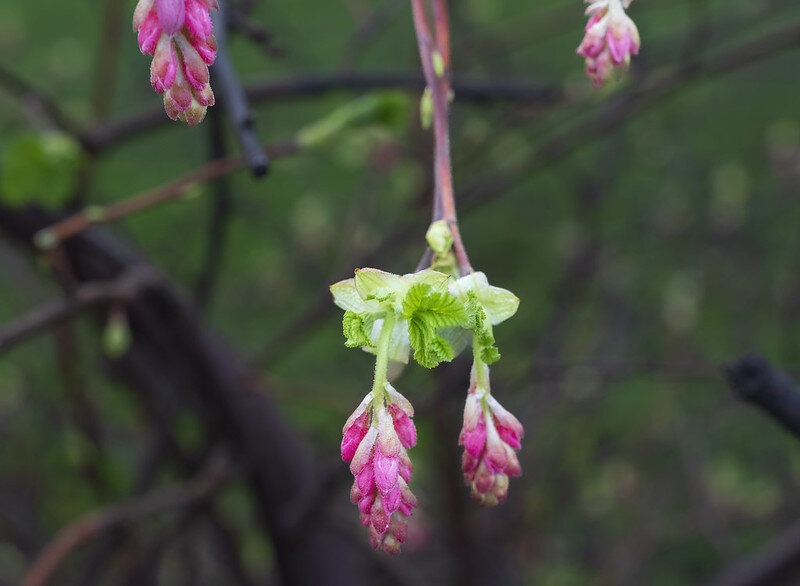
Photo Credit: John Knight / Flickr / CC BY 2.0
Red flowering currant, also known as blood currant, boasts red flowers that sprout in the spring. It’s native to Washington and surrounding areas like Oregon, Idaho, and British Columbia. This shrub produces edible berries that have been used to make pies and juice. Red flowering currant attracts hummingbirds and butterflies.
This plant grows best in rocky, well-drained soil, but tolerates poor soil. Once it’s established, it’s drought tolerant. But it needs plenty of water in its first one to two seasons.
Blood currant’s drought tolerance makes it ideal for rain gardens or xeriscape designs. This shrub is also a good idea for hedges. Prune it after flowers bloom to ensure the blossoms continue to sprout.
Native Regions: Western Washington, and parts of the Rocky Mountain, East Cascade, and Plateau Region
Plant type: Deciduous shrub
Hardiness zones: 5 to 9
Sun: Full sun, partial shade
Soil: Prefers well-drained, rocky soil but tolerates poor soil
Duration: Perennial
Fragrance: Sweet sage-rosemary
Bloom time: Spring
Water needs: Water the first two summers of establishment
Mature height: 8 to 10 feet
Potential hazards: None known
Maintenance: Low
2. Pacific Bleeding Heart (Dicentra formosa)
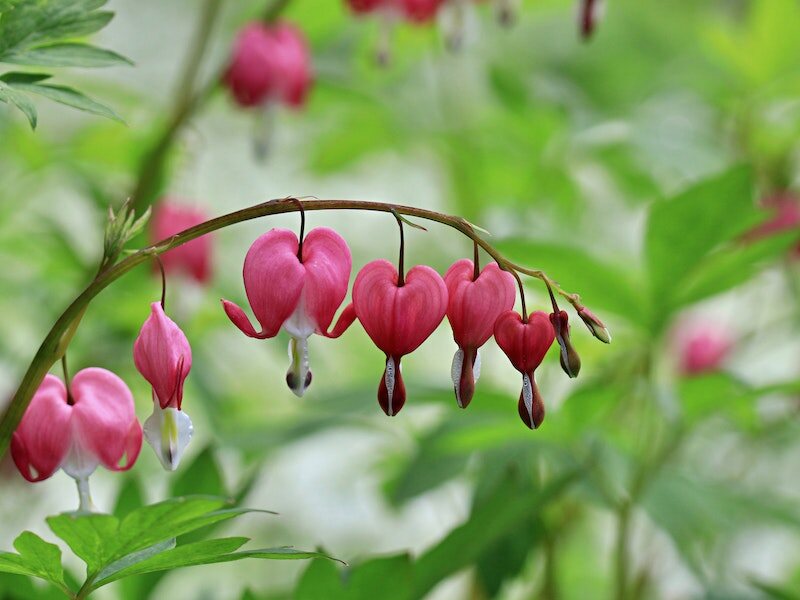
Photo Credit: Pexels
Pacific bleeding heart is great for Washington homeowners who want to start a garden quickly. This flower grows fast. It has heart-shaped white flowers and leaves that resemble ferns, which explains why it’s also known as fern-leaf bleeding heart.
Pacific bleeding heart prefers full sun to partial shade. If your property has a lot of trees or buildings blocking the sun, bleeding heart will still grow, but it won’t blossom as many flowers.
Butterflies and hummingbirds flock to this plant. Pacific bleeding heart adds a delicate look to shade gardens and borders. This flower is also great for cottage gardens and slopes. Bleeding heart is toxic and can cause stomach and skin irritation, so be careful when handling it.
Native regions: Western Washington and parts of Rocky Mountain and the Eastern Cascades
Plant type: Flower
Hardiness zones: 3 to 9
Sun: Full sun to partial shade. Thrives in partial shade. Tolerates full shade, but fewer flowers will bloom.
Soil: Moist, well-drained, humus-rich soil
Duration: Perennial
Fragrance: None
Bloom time: Late spring to early summer
Water needs: Low to medium
Mature height: 1 to 2 feet
Potential hazards: Toxic to humans and animals
Maintenance: Low
3. Common Camas (Camassia quamash)
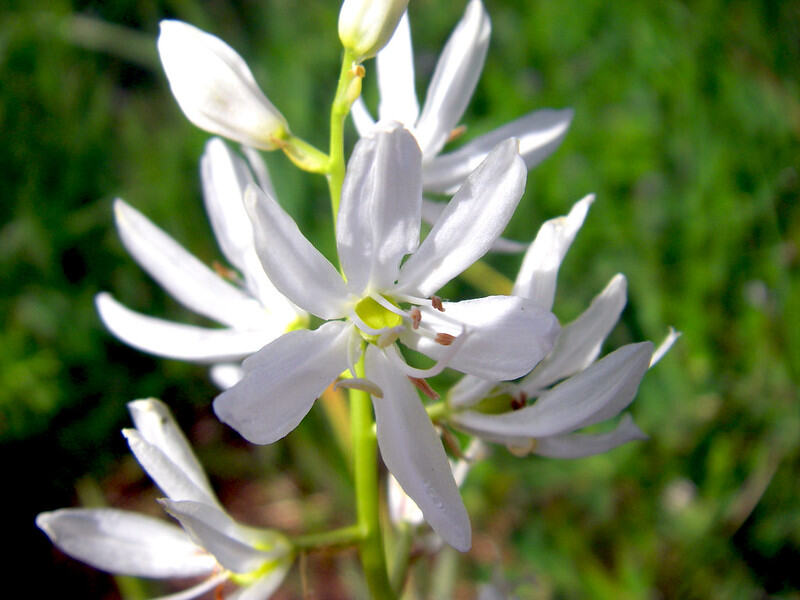
Photo Credit: Bureau of Land Management / Flickr / CC BY 2.0
You’ll see common camas growing on the eastern and western sides of the Cascades. Lovely light blue flowers bloom from late spring to early summer. The petals grow at the top of long blades that resemble grass.
Common camas is highly disease and pest tolerant. It needs full sun and requires constant moisture while growing, but adapts to drier conditions after the flowers sprout.
This wildflower is best when planted in groups. If you plan on planting in the fall, common camas is for you. It yields the best results when planted in the autumn. It compliments cottage gardens and shrubs or roses as an underplanting. Bumblebees and beetles can’t get enough of the grass-like wildflower.
Native regions: Western Washington and Rocky Mountain Region; native to most of the Plateau Region and Eastern Cascade.
Plant type: Flowering plant/wildflower
Hardiness zones: 3 to 8
Sun: Full sun, very little shade
Soil: High organic matter with good drainage; tolerates seasonally moist soil
Duration: Perennial
Fragrance: Spicy; Smells like molasses when boiled
Bloom time: Late spring to early summer
Water needs: Average /(Natively found in moist, spring meadows that dry by late spring)
Mature height: Up to 30 inches
Maintenance: Low to medium
4. Red-Osier Dogwood (Cornus sericea)
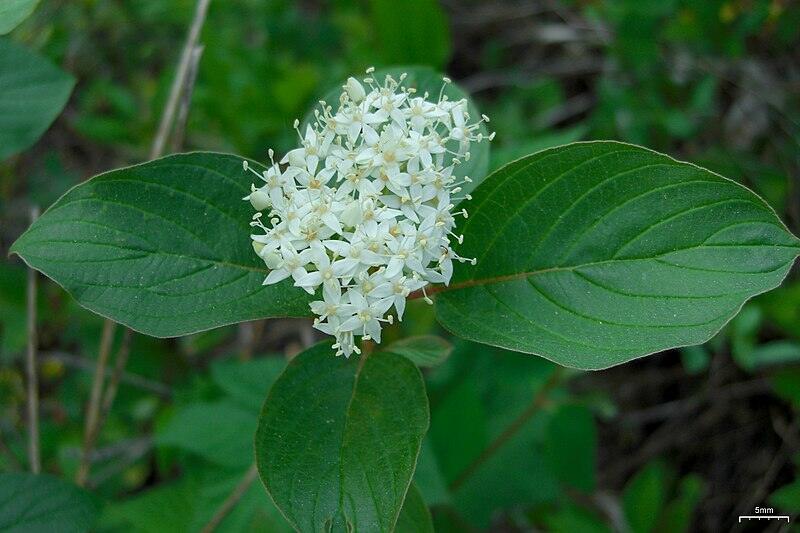
Photo Credit: Jason Hollinger / Wikimedia Commons / CC BY 2.0
Red-osier dogwood is best described as a small red twig. It’s a Washington favorite because it adds color late in the season when it turns red in the fall and winter. Butterflies and pollinators enjoy the flowers that bloom in late spring to early summer. Birds partake of the berries that follow.
Red-osier adds a wonderful splash of color to shrub borders and alongside ponds. It’s also great for rain gardens.
A benefit of this shrub is that it’s adaptable to many soil types. A drawback is that it’s vulnerable to many diseases, like leaf spot, powdery mildew, and root rot. However, it has no known pest problems in the Northwest region, making it a good choice for Washington homeowners. Another benefit is that its roots help reduce erosion.
Native regions: Western and Eastern Washington; native to most of the Puget Sound Lowlands
Plant type: Shrub
Hardiness zones: 2 to 7
Sun: Full sun to partial shade
Soil: Chalk, clay, loam, sand, moist, adaptable to a wide range of soils.
Duration: Perennial
Bloom time: Spring and summer
Water needs: Medium to high
Mature height: 6 to 9 feet
Maintenance: Medium. Use a spade to root prune if you want to stop it from vigorously spreading. Prune in early spring to encourage new stem growth.
5. Tall Oregon Grape (Mahonia aquifolium)
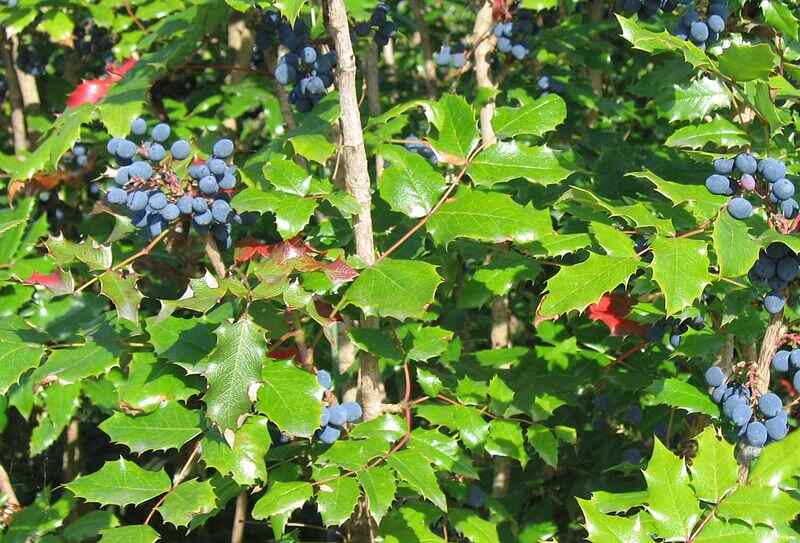
Photo Credit: Meggar / Wikimedia Commons / CC BY-SA 3.0
Tall Oregon grape is low maintenance, making it a great choice for homeowners without a lot of time. It thrives in shade or full sun and a variety of soil conditions. Oregon grape is known for its antibacterial and anti-inflammatory medicinal properties.
It has bright yellow flowers that bloom in the spring and edible, bitter-blue berries that appear in the summer. This shrub attracts birds, wildlife, and pollinators. Tall Oregon grape makes a delicious hedge or addition to shade gardens.
Native regions: Most of Western Washington and Eastern Washington, except for some parts of the Plateau Region
Plant type: Shrub
Hardiness zones: 5 to 8
Sun: Partial shade to full shade
Soil: Loam, acidic, well-drained
Duration: Perennial
Fragrance: Honey
Bloom time: Spring
Water needs: Medium
Mature height: 6 to 8 feet
Maintenance: Low
6. Vine Maple (Acer circinatum)
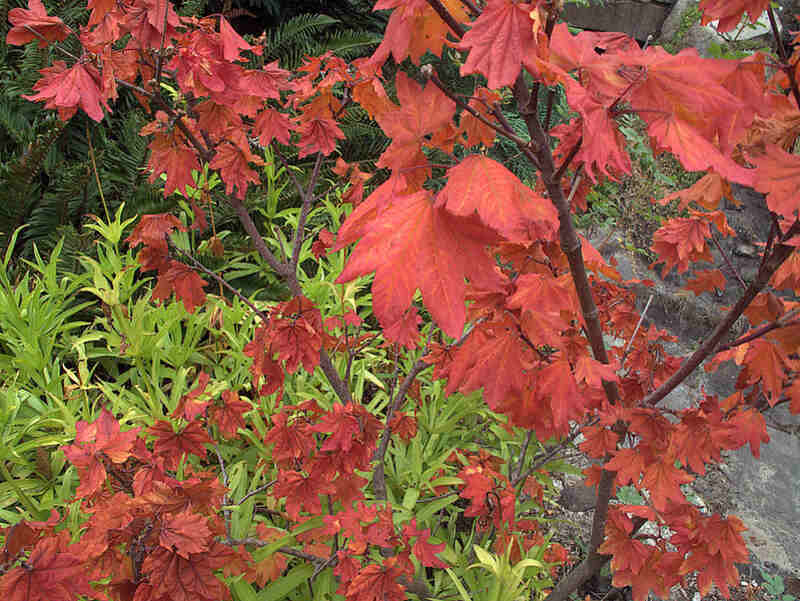
Photo Credit: John Rusk / Flickr / CC BY 2.0
Vine maple grows well in open areas and is natively found with the Pacific dogwood and the Douglas-fir. Vine maple is said to be one of the best native trees for residential yards.
It has purple and white flowers. Mammals and songbirds enjoy the red berries that appear after the flowers bloom in the spring.
This plant is best for yards with full sun to partial shade. It grows well in multiple soil types. Vine maple grows up to 30 feet tall and is classified as a shrub or tree. It’s low-maintenance and deer-resistant, but it may be affected by honey fungus and aphids.
Vine maple provides a great visual appeal in cottage gardens. If you’re looking for a larger addition to a rain garden, give vine maple a try.
Native regions: Western Washington and parts of Eastern Cascade and the Plateau Region closest to Western Washington
Plant type: Small tree, shrub
Hardiness zones: 5 to 9
Sun: Full sun to partial shade
Soil: Loam, sand, clay, moist, well-drained
Duration: Perennial
Fragrance: None
Bloom time: Spring
Water needs: Medium
Mature height: 15 to 30 feet tall, 15 to 20 feet wide
Maintenance: Low
7. Salal (Gaultheria shallon)
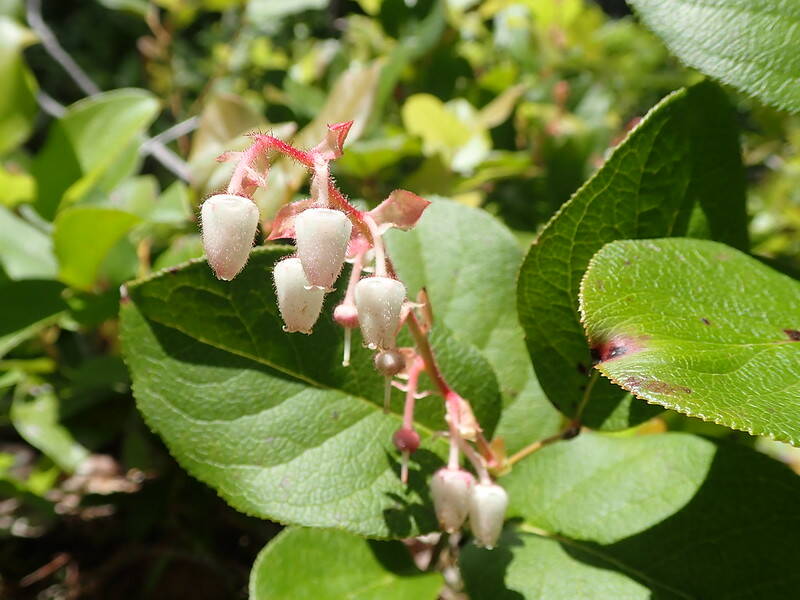
Photo Credit: Mount Rainier National Park / Flickr / CC BY 2.0
Salal is another native plant, like tall Oregon grape, that is known for its medical value. It has anti-inflammatory and anti-cramping properties. The blue berries that appear in late summer have been used as a sweetener and in baked goods.
Salal spreads and eventually makes an appealing ground cover, making it well-suited for a low-maintenance landscaping scheme where you’re replacing some or most of your grass. Salal is also great for shade gardens and on slopes. For best results, prune after the flowers bloom. If your property gets a lot of shade, salal is an ideal choice. It thrives in full to partial shade.
Native regions: Western Washington, and limited counties in Eastern Cascade and the Rocky Mountains
Plant type: Shrub
Hardiness zones: 5 – 9
Sun: Partial shade to full shade
Soil: Moist, acidic, well-drained
Duration: Perennial
Fragrance: Smells like wintergreen
Bloom time: Spring and summer
Water needs: Medium
Mature height: Grows up to 5 feet in shade and up to 3 feet in full sun.
Maintenance: High
8. Evergreen Huckleberry (Vaccinium ovatum)
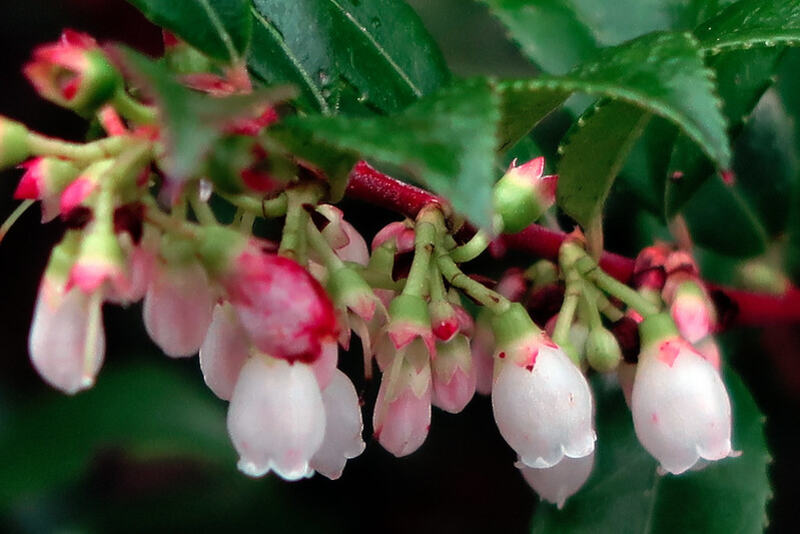
Photo Credit: John Rusk / Flickr / CC BY 2.0
Evergreen huckleberry has a magnificent display of white flowers and reddish leaves that appear in the spring. Wildlife and birds are attracted to the berries that arrive in the summer. These berries are edible and have been used in syrups and pies.
Huckleberry requires high maintenance, but it will grow well on your property whether your yard is shady or sunny. It makes a tasty hedge or shrub border. If you’re looking to add some edible character to a rain garden or xeriscape design, this evergreen is an optimal choice.
Native regions: Parts of Western Washington; No parts of Eastern Washington
Plant type: Needled Evergreen
Hardiness zones: 7 to 9
Sun: Sun or shade; prefers partial or full shade
Soil: Tolerates sand, clay, and soils low in organic content; requires acidic soil
Duration: Perennial
Fragrance: Musky
Bloom time: Feb – July
Water needs: Low, Medium to wet
Mature height: 2 to 10 feet tall; grows taller in shade
Maintenance: High
9. Serviceberry (Amelanchier medik.)
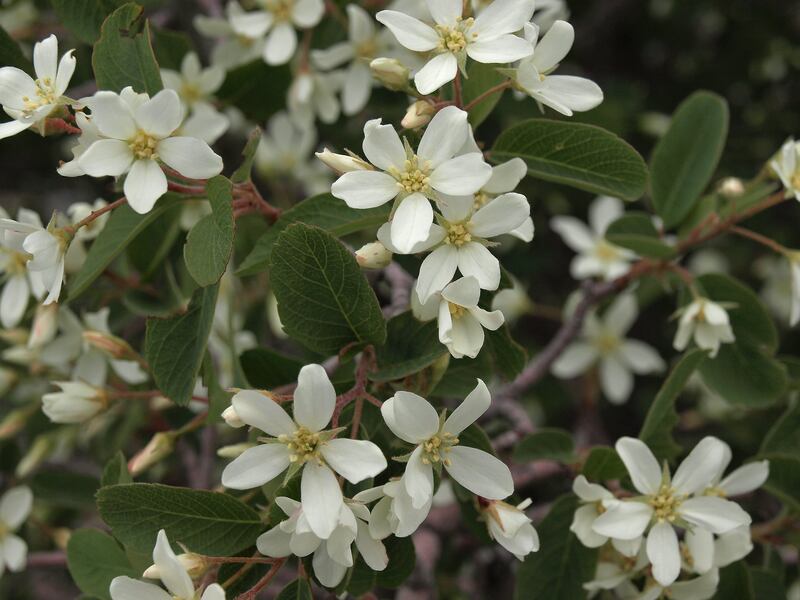
Photo Credit: Jim Morefield / Flickr / CC BY-SA 2.0
Serviceberry, also known by its common name, Juneberry, adds spectacular fall color as its leaves turn red-orange. Pollinators are attracted to the white flowers that sprout in the middle of spring. Birds enjoy the edible berries that taste like blueberries. The berries have been used to make jellies and jams.
Serviceberry grows in shady yards, but the berries grow best when the plant receives full sunlight. If the root suckers the plant develops are permitted to grow, serviceberry will grow as a shrub. Otherwise, you’ll have a taller, fruit-bearing tree in your landscape.
This plant is great for an edible garden, pollinator garden, or planted on a lawn or near patios.
Native regions: All
Plant type: Shrub or tree
Hardiness zones: 4 to 9
Sun: Full sun to partial shade
Soil: Sand, loam (silt), clay, well-drained and moist
Duration: Perennial
Fragrance: Sweet
Bloom time: Spring
Water needs: Average
Mature height: 15 to 25 feet tall and wide
Maintenance: High
10. Indian Plum (Oemleria cerasiformis)
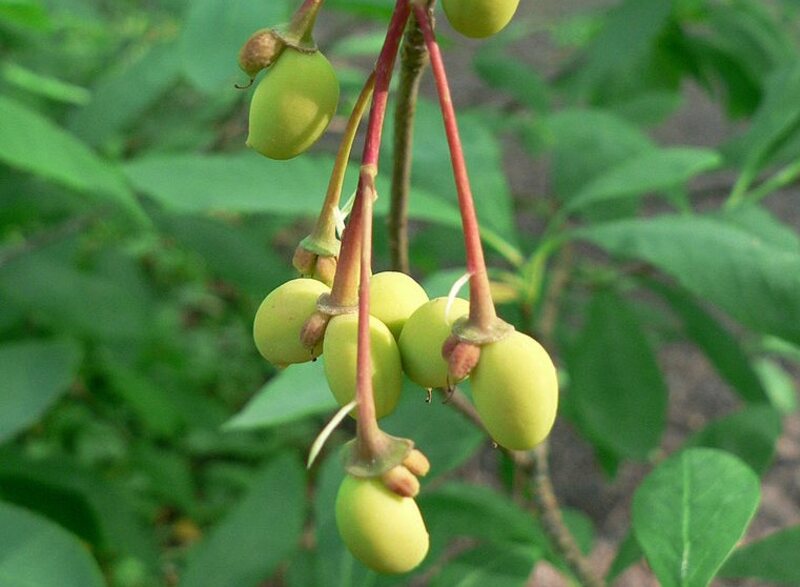
Photo Credit: Wsiegmund / Wikimedia Commons / CC BY-SA 3.0
Indian plum has clustered white flowers that hang downward and appear in late winter through early spring. It’s natively found in moist and dry areas like stream banks, hillsides, and along roads.
The berries start out orange and turn a bluish-black when they ripen in the summer. Hummingbirds, butterflies, and pollinators are attracted to the flower’s nectar. The berries attract bears, small mammals, and birds.
A yard that gets full sun and some shade is best for this shrub. It tolerates dryish soil but does not adapt to wet soil.
Indian plum looks great in shrub borders, city gardens, and cottage gardens.
Native regions: Western Washington and limited areas of the Plateau Region
Plant type: Shrub or tree
Hardiness zones: 6 to 10
Sun: Full sun to partial shade
Soil: Acidic, fertile, humus-rich, moist but well-drained
Duration: Perennial
Fragrance: Almond
Bloom time: Spring
Water needs: Medium
Mature height: 8 to 20 feet tall
Maintenance: Low
Plants Native to Eastern Washington
Eastern Washington’s native plants include:
- Common Yarrow
- Saskatoon Serviceberry
- Douglas Fir
- Sagebrush
- Lewis’ Mock Orange
- Showy Phlox
- Western Aster
- Velvet Lupine
- Red Bearberry
Plants Native to Western Washington
Western Washington’s native plants include:
- Western Columbine
- Pacific Bleeding Heart
- Tall Oregon Grape
- Red Flowering Currant
- Serviceberry
- Vine Maple
- Common Camas
- Pacific Dogwood
- Western Starflower
- Salal
- Lewis’ Mock Orange
- Red Elderberry
How to Choose Native Plants for Your Washington Yard
Choosing plants in your region’s USDA hardiness zone is the best way to pick native plants that will thrive with the least amount of effort. There will still be some work involved, but you’ll have fewer watering, fertilizing, and other maintenance tasks because the plants have adapted to your area.
Your yard’s characteristics are also important. You don’t want to choose plants that thrive in specific soils if your property is not of that type. On the other hand, some plants adapt to multiple soil conditions and pH levels. If you’re not sure about your soil, it may be best to choose more adaptable plants.
You’ll also want to consider your lifestyle. If you’re constantly pulling children away from the garden and shrubs, you may want to make sure you only plant non-toxic plant varieties.
Do your research to make sure your plant selection fits in well with your home’s conditions, maintenance preferences, and family composition.
FAQ About Native Washington Plants
What plants are native to Seattle?
Seattle’s native plants include:
- Pacific Bleeding Heart
- Tall Oregon Grape
- Vine Maple
- Wild Ginger
- Salal
- Common Camas
- Evergreen Huckleberry
- Red Flowering Currant
What plants are native to Tacoma?
Tacoma’s native plants include:
- Wild Ginger
- Tall Oregon Grape
- Common Camas
- Vine Maple
- Red Flowering Currant
- Lewis’ Mock Orange
- Nootka Rose
- Pacific Red Elderberry
What are some plants that are non-native to Washington?
It can be difficult to distinguish which plants are native. Some non-native plants have parts of their name that are the same as native plants. Here are a few examples of non-native plants:
- American black elderberry (Sambucus canadensis)
- Red Columbine (Aquilegia canadensis)
- Poison hemlock (Conium maculatum)
- Italian alder (Alnus cordata (Loisel.) Duby)
- Common yarrow (Achillea millefolium L. var. arenicola (A. Heller) Nobs)
- Indian plum (Flacourtia jangomas (Lour.) Rausch.)
- Silver mock orange (Philadelphus argenteus Rydb.)
- Eastern red cedar (Juniperus virginiana L.)
- Victorin’s manzanita (Arctostaphylos ×victorinii Rolland-Germain)
- Achiotillo (Alchornea latifolia Sw.)
What are some other plants that are native to Washington?
Following are some native Washington plants with common or scientific names similar to the non-native plants listed earlier:
- White alder (Alnus rhombifolia nutt.)
- Gray alder (Alnus incana (L.) moench)
- Western redcedar (Thuja plicata Donn ex D. Don)
- Manzanita (Arctostaphylos adans.)
- Coastal sand verbena (Abronia latifolia eschsch.)
Where to Find Native Plants in Washington
Native plants are everywhere. They’re in your neighborhood, at parks, and even in commercial landscapes at malls and business parks. To find native plants you can take home with you, the Washington Native Plant Society is a great resource. You can learn about gardening events, native plant programs, and local nurseries.
The sooner you’re done planting your attractive array of native perennials, dogwoods, and hemlocks, the sooner you can make it to the Washington State Fair. Let a lawn care pro near you do the mowing and edging. We have trusted lawn care pros in Spokane, Seattle, Tacoma, and many other cities across the state.
Main Image Credit: brewbooks / Flickr / CC BY-SA 2.0